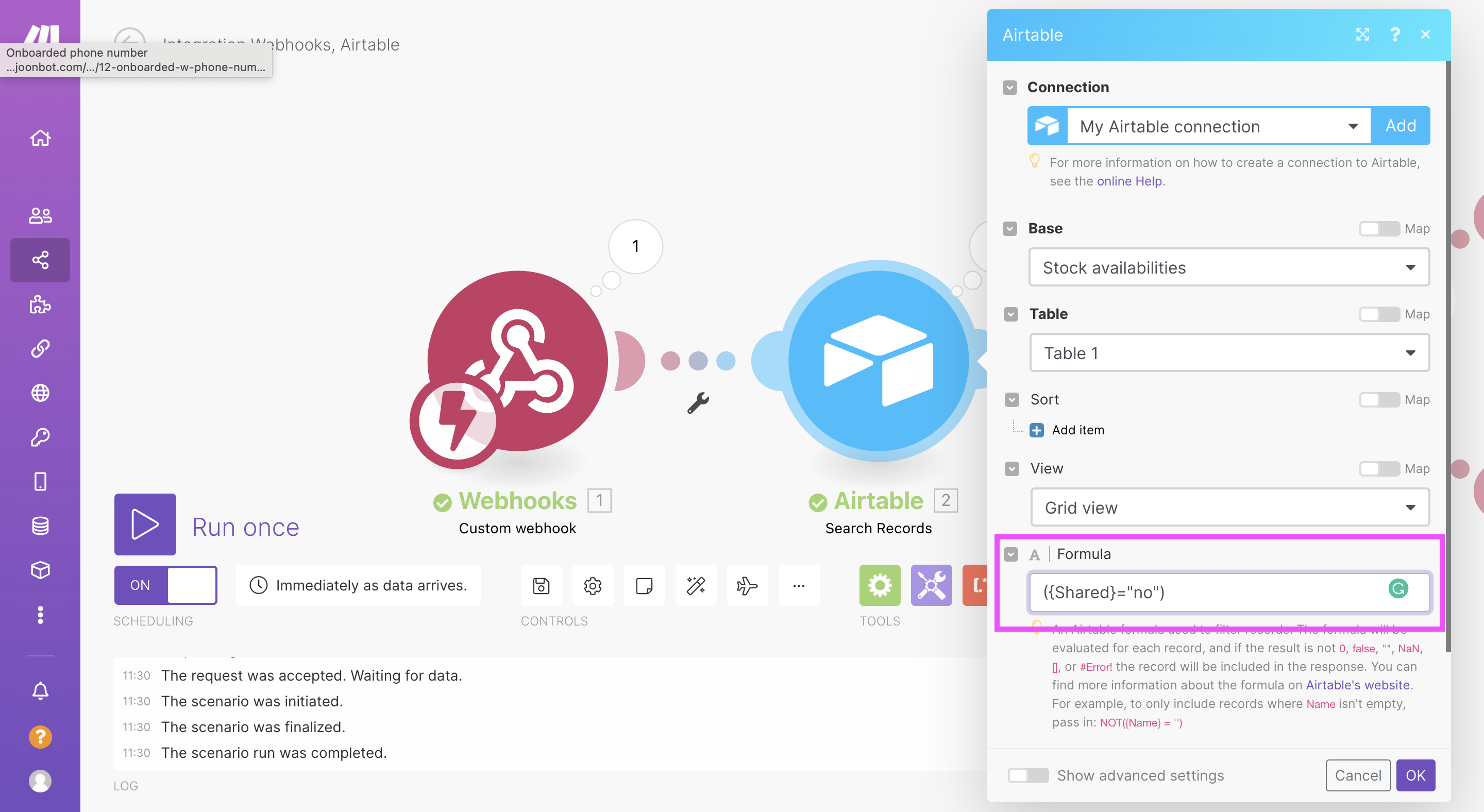
Let’s say you were using Airtable to manage your blog post workflow. Let’s stick with that last bullet for a moment.
#Airtable search formula password
Automatically display a message if a new password doesn’t have the minimum required characters.What’s the purpose of seeing how many characters are in a string of text? There are actually several practical use cases for this formula. The LEN(string) shows the exact length of the characters within the formula.įor example: LEN(“jump over the rope”) => 18 But the formula also has lots of practical use cases. The LEN(string) is a straightforward way to show how Airtable formulas work.

Example 1: Calculating Length Using LEN(string) We’ll start with some simple examples and slowly get a bit more advanced. Now that you have a firm grasp of the basics, let’s take a closer look at some real-world examples of Airtable formulas and how you can use them. Cell - This is terminology you should already be familiar with, as it’s the same term used in Excel.

This is a single record of information containing data stored within your fields.

Record - An Airtable record can best be compared to an Excel row.They’re used to display different types of data for all records within the table. Field - Fields are Airtable’s version of an Excel column.Options include forms, galleries, grids, calendars, and Kanban. View - Views are the different ways you can organize and view data within a table.But you can link tables to each other and use multiple tables for your formulas. Table - Tables are Airtable’s version of an Excel worksheet.It’s a file that contains all of your tables. Base - Airtable bases are essentially the Excel equivalent of a workbook.This foundation will make it easier for you to use and apply Airtable formulas. Let’s take a look at some other common Airtable terminology you need to understand. Airtable has similar spreadsheet functions, but the platform just uses slightly different terminology. So if you’re familiar with Excel, the learning curve with Airtable and Airtable formulas won’t be quite as steep. To help provide some clarity, here’s a table that shows the common terms associated with Airtable formulas, what they’re used for, and examples:Īs previously mentioned, Airtable is often compared to other spreadsheets, like Excel. You’ll likely see a mix of both dates and numbers with a string output. Number outputs are typically decimals, percentages, integers, durations, or currencies. You can also select a time zone for the collaborators. Then you can adjust your formatting preferences to select how you want the output displayed.ĭate formats give the option to include a field for a time. The formula will ultimately yield an output of a date, number, or string. To write a formula, you can select a pre-existing function or write one of your own. When you’re working in an Airtable base, you can just choose a formula from the available options in the table. How Airtable Formulas WorkĪt its core, an Airtable formula is simply a field type. You can include information from other tables and resources within Airtable to improve your formulas and get the most out of this platform as a database tool. Formulas give you the opportunity to use Airtable in creative and inventive ways.Īirtable formulas are applied to an entire column, as opposed to a single cell. The formulas can involve logic, text, numbers, conditional statements, and functions. In addition to creating advanced calculations in a database or automatically managing a budget, you could use Airtable formulas to set and assign recurring events for project management. But Airtable formulas can be used for other purposes as well. When most people see or hear the word “formula,” they automatically associate it with math or numbers. But the formulas in Airtable are far more advanced, allowing you to use this functionality for a wide range of potential use cases. You can use formulas to manipulate data, calculate different metrics, or make it easier to understand the information in a database.Īirtable formulas can best be compared to formula functions on a traditional spreadsheet, like Excel or Google Sheets. What Are Airtable Formulas Anyway?įormulas are arguably Airtable’s most powerful features. This guide will explain everything you need to know about Airtable formulas. You can use it to manage workflows, track inventory, collaborate with teams, and so much more.īut to get the most out of Airtable and its functionality, you need to understand Airtable formulas and how they work. Airtable is a versatile relationship database tool.


 0 kommentar(er)
0 kommentar(er)
